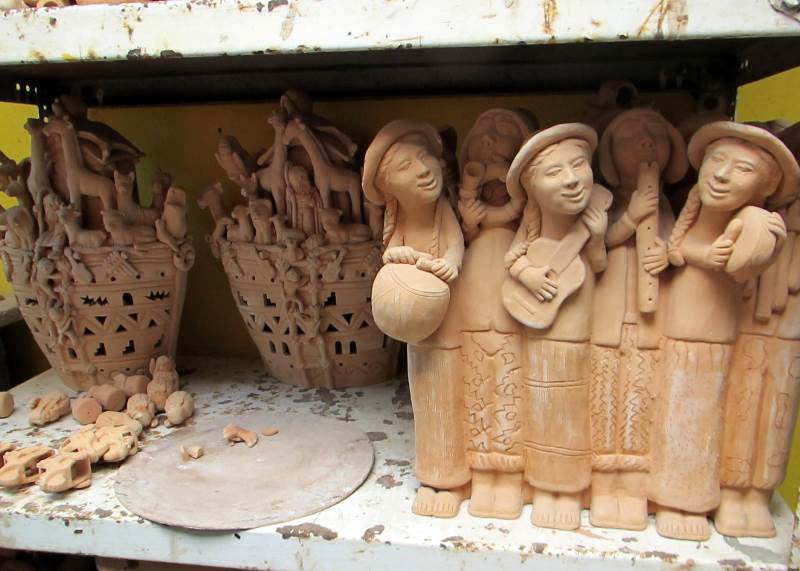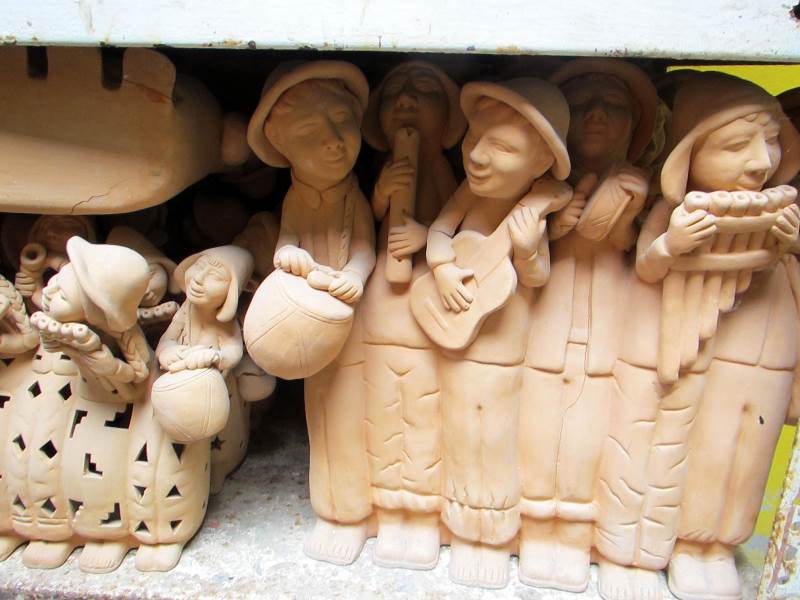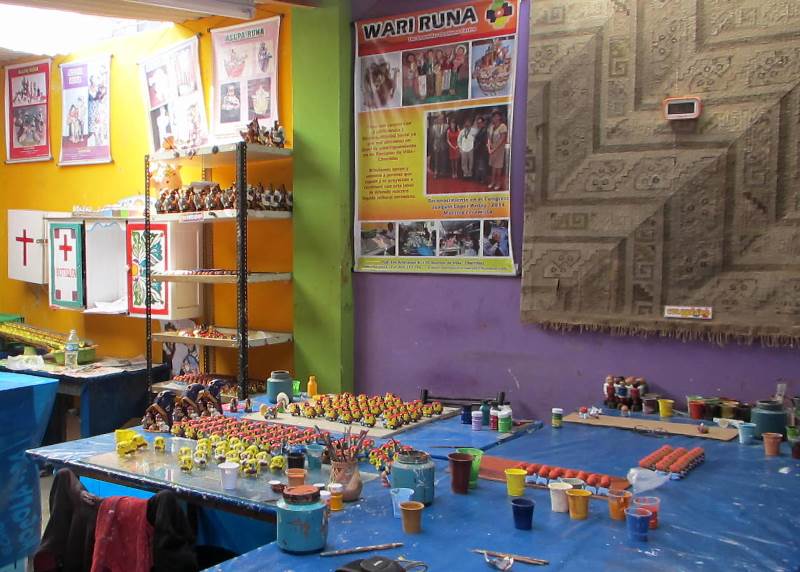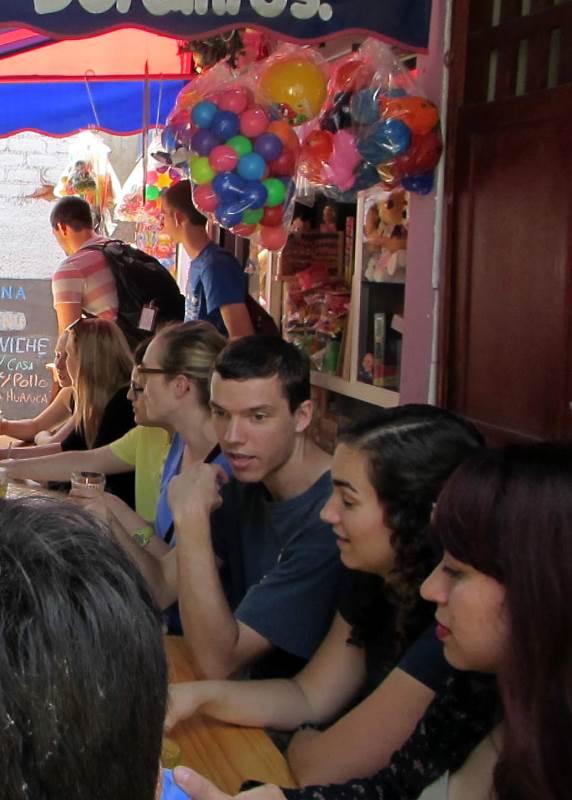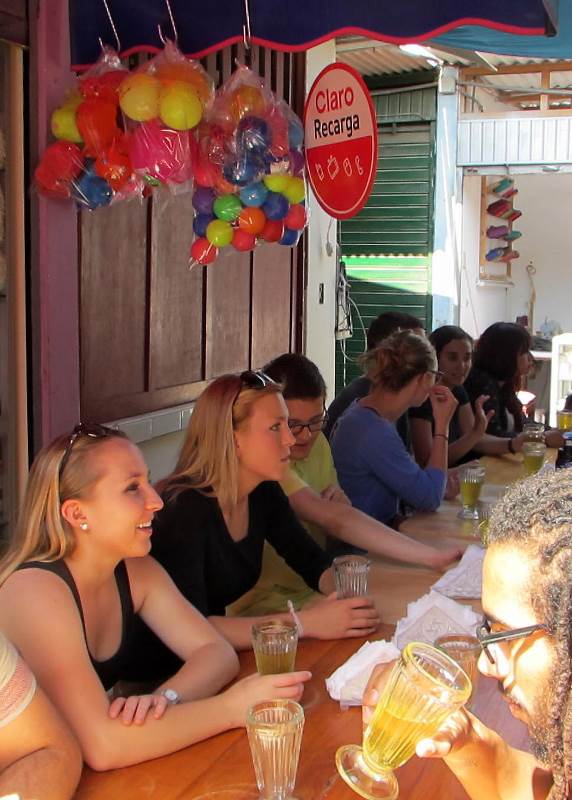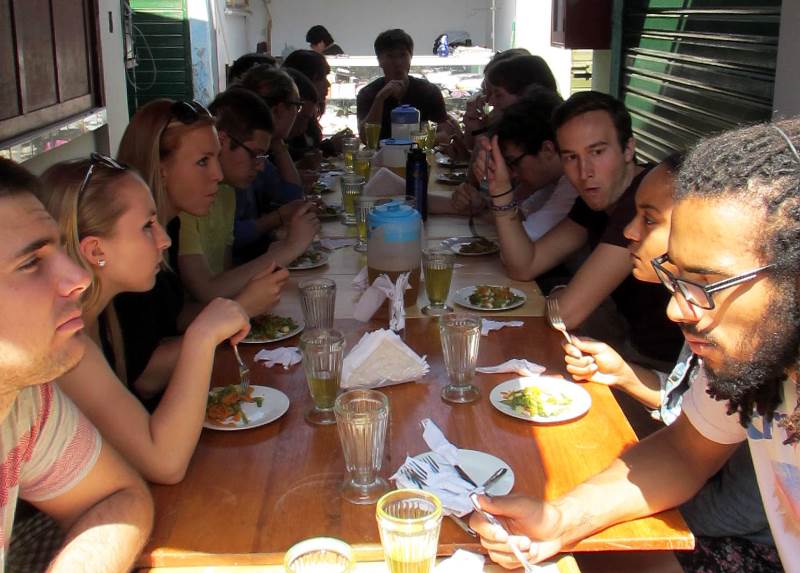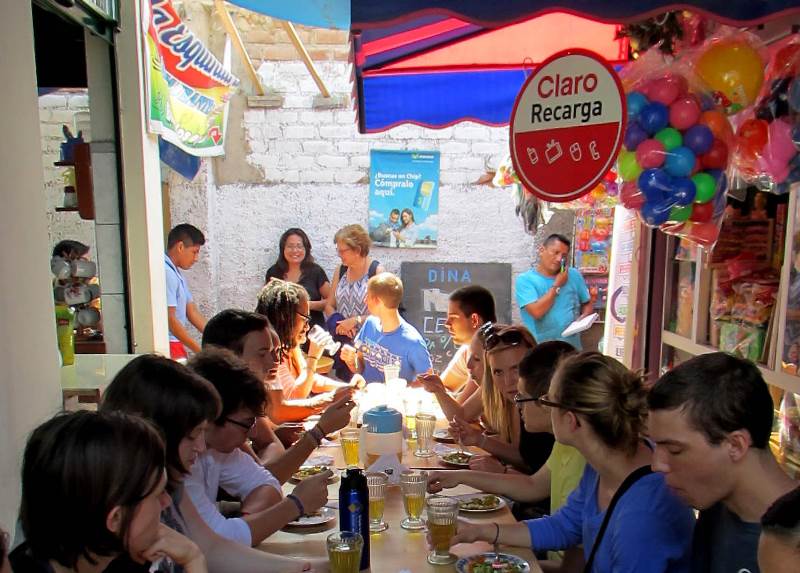Tracking the Economics and Art of Fair Trade
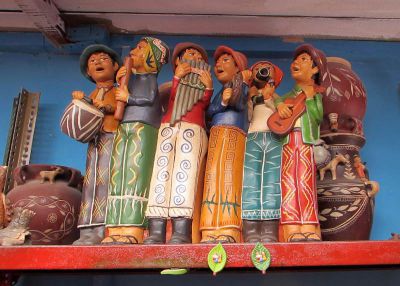
By Karen and Duane Sherer Stoltzfus
Peru SST Co-Directors, 2014-2015
A 10-minute walk from Casa Goshen, the home office of the SST program in Peru, is the headquarters for Manos Amigas, a Christian organization that exports handicrafts on behalf of independent artists, advocating for fair prices and tracking shifts in consumer demand for crafts.
Yannina Meza, who directs Manos Amigas, or “Friendly Hands,” and who is also Kate’s host mother, was away attending a national meeting on fair trade. Her sister-in-law, Christine Meza, met us at the door.
She told us that Manos Amigas works with dozens of artisan groups and workshops in cities across the country, including several places where students will travel for service (Ayacucho and Cusco). The artisans’ candlelit table scenes, knitted scarves and gloves, carved gourds, polished stone earrings and other products are shipped abroad.
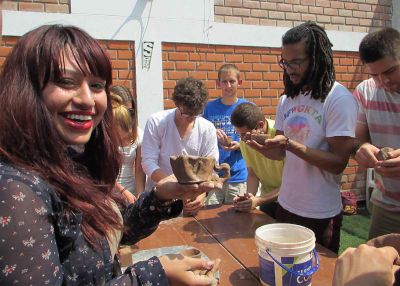
The organization’s largest client is Ten Thousand Villages, a fair trade retailer with shops in Goshen and Mishawaka, among many other locations. On the day that we visited, dozens of handmade mirrors were boxed and lined up against the wall, ready for shipment to Ten Thousand Villages in Pennsylvania.
Nativity scenes and other Christmas crafts have been, year round, the most popular products for export. Manos Amigas tries to balance demands of the marketplace with artistic freedom and Peruvian aesthetics.
Several years ago the demand was strong for ethnic art, such as a Peruvian figure wearing a chuyo, or traditional wool hat, Christine said. Buyers are now more interested in “stylized, less indigenous” art, she said. “The cultural look is less popular.”
Some buyers are asking for figures with lighter hair and skin. There is also an uptick in demand for utility, as in eyeglass holders in the shape of monkeys, turtles, elephants or other animals.
Clients are based in the U.S., Canada, Australia, England, France, Germany, Italy.

Doug Lapp, who represents Ten Thousand Villages as the buyer for Latin America and the Middle East, spoke with us when he visited in January.
Ten Thousand Villages buys more crafts from Peru than from any other Latin American country, he said. In fact, Peru ranks in the top 5 worldwide (India is No. 1 and Bangladesh is No. 2).
Although Manos Amigas added five new clients, or purchasers, last year, it continues to be a challenging economic time. A year ago Manos Amigas employed 87 family artisan groups, but at year-end they were forced to reduce the roll. In 2015, Manos Amigas contracts with 48 artisan groups. Christine said 55 percent of the artisans are women, and 45 percent men. Manos Amigas presently provide educational scholarships for four children from artisan families.
After Christine’s overview of Manos Amigas, we had 30 minutes to shop in the store. Several students took advantage of the opportunity to buy gifts for Sunday, Mother’s Day.
We were closer to the source of fair trade crafts than most of us had ever been but we had a chance to get even closer. Together we took a bus to Chorrillos, a waterfront district at the southern end of Lima. We turned on to dirt roads as we made our way to the workshops of a master craftsman who works in clay, Leonidas Orellana Castro.
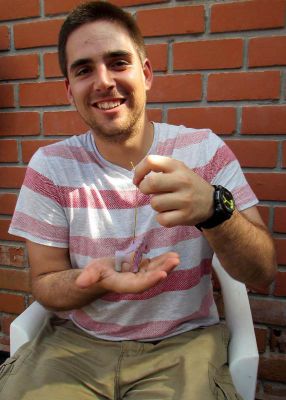
Leonidas said that as an 18-year-old he came to Lima from the highlands of Ayacucho, where the Shining Path, or Sendero Luminoso, emerged around 1980 and which remained at the center of the armed conflict over the next two decades.
“I didn’t want to come,” he said. “My parents and family were there.”
But it was a dangerous time, especially for young people, who were caught between government and Sendero forces. Each side suspected youth of cooperating with the other side. He said 12 of his school classmates were killed.
Lima has treated him well. He has been making a living from his art for more than 30 years. He has also been nationally recognized for his promotion of nontoxic paint and lacquer. His pottery is heavily influenced by geometric designs from the Wari, his ancestors. His workshop is named Wari Runa, or “Wari Man.”
Leonidas and his assistants first brought out clay and let the students experiment in making cups, bowls and hats. These early efforts needed longer than a day to dry, so after lunch they provided students with completed ceramic pieces in the shape of cows and hearts. Then the artistry was in the brush.




























